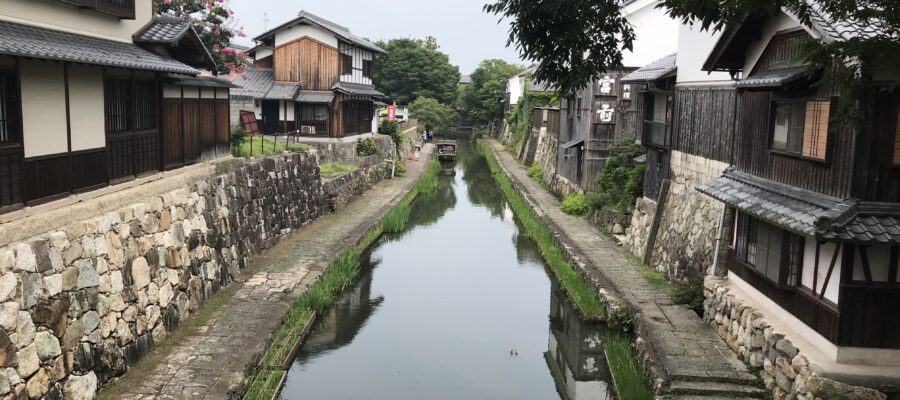琵琶湖とつないで水運を利用
滋賀県近江八幡市は水路、八幡掘を御存じでしょうか。ご存知でなくても、テレビや映画のロケ地として、知らず知らずのうちに目にしている方が多くいるはずです。元々は、戦国時代にこの地を治めた豊臣秀次が、琵琶湖とつないで水運を利用するために造られたと聞いています。
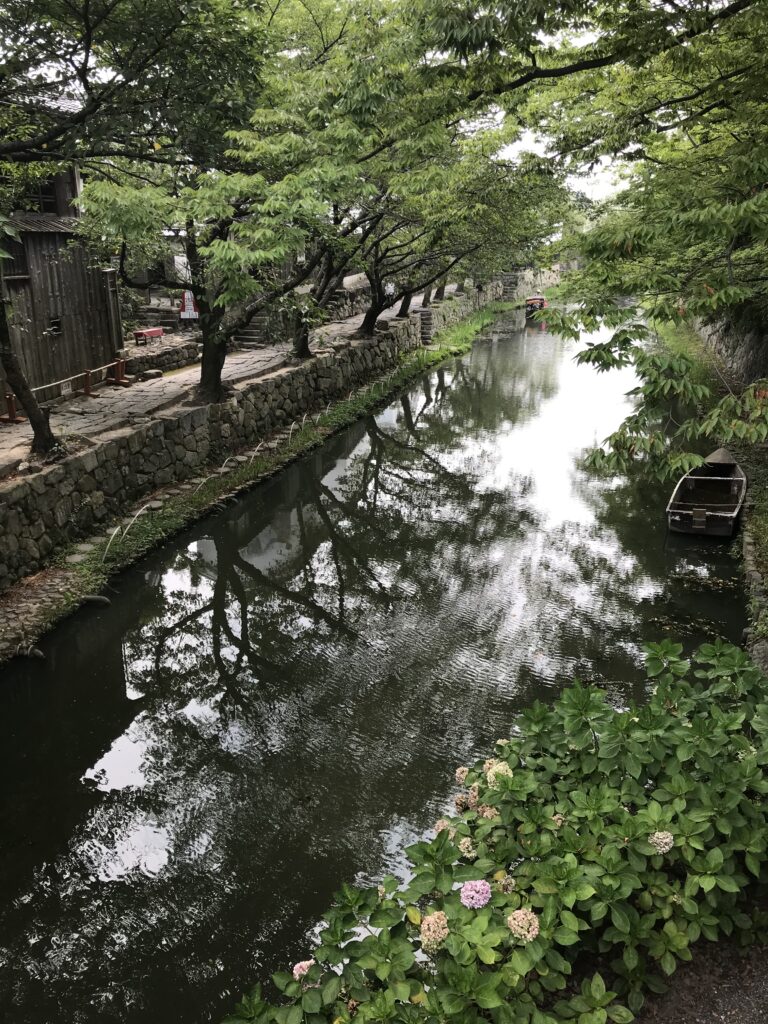
江戸時代にタイムスリップ
橋の上から見ると、どこにでもあるような堀の風景に見えましたが、橋から下って堀と同じ高さに立つと、江戸時代あるいは明治の初期にタイムスリップしたような感覚になります。堀の両サイドは石畳が敷き詰められ、そこから石垣が切り立っていて、白壁の旧家が立ち並んでいます。
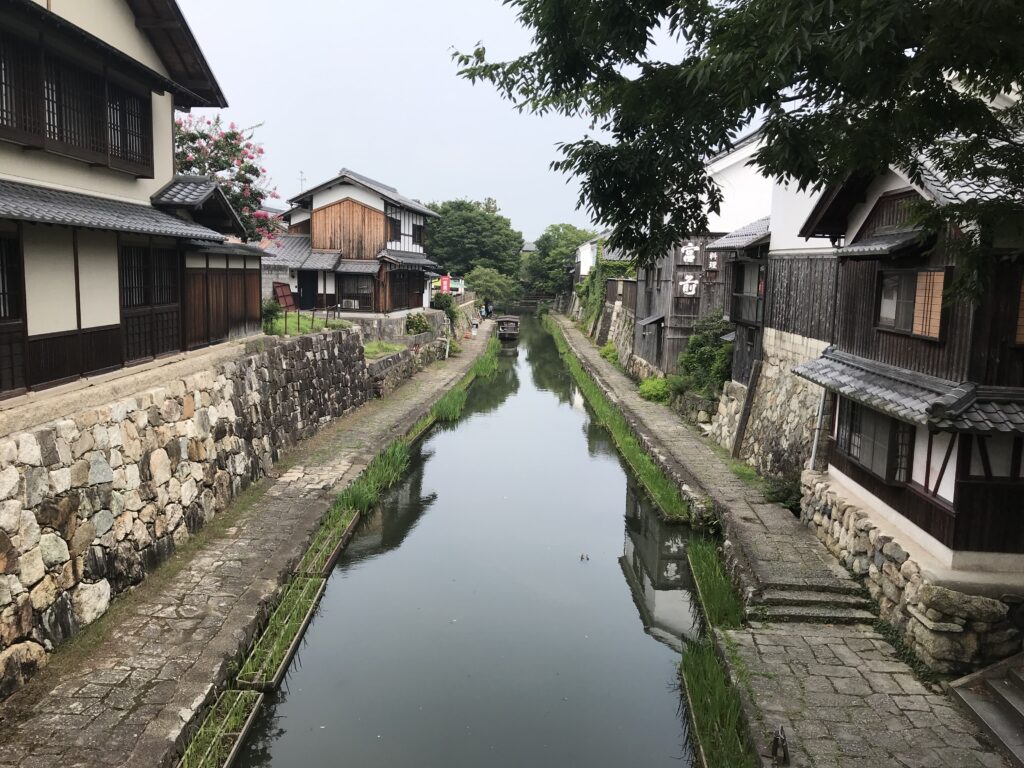
何年か前に、NHKの朝の連続テレビ小説で、波留さんが主演をつとめた「あさが来た」を妻が観ていました。その中で、この八幡堀を使ったシーンがあったそうです。それ以来、何度か訪れたいというリクエストをもらっていたのですが、ようやく来ることができました。
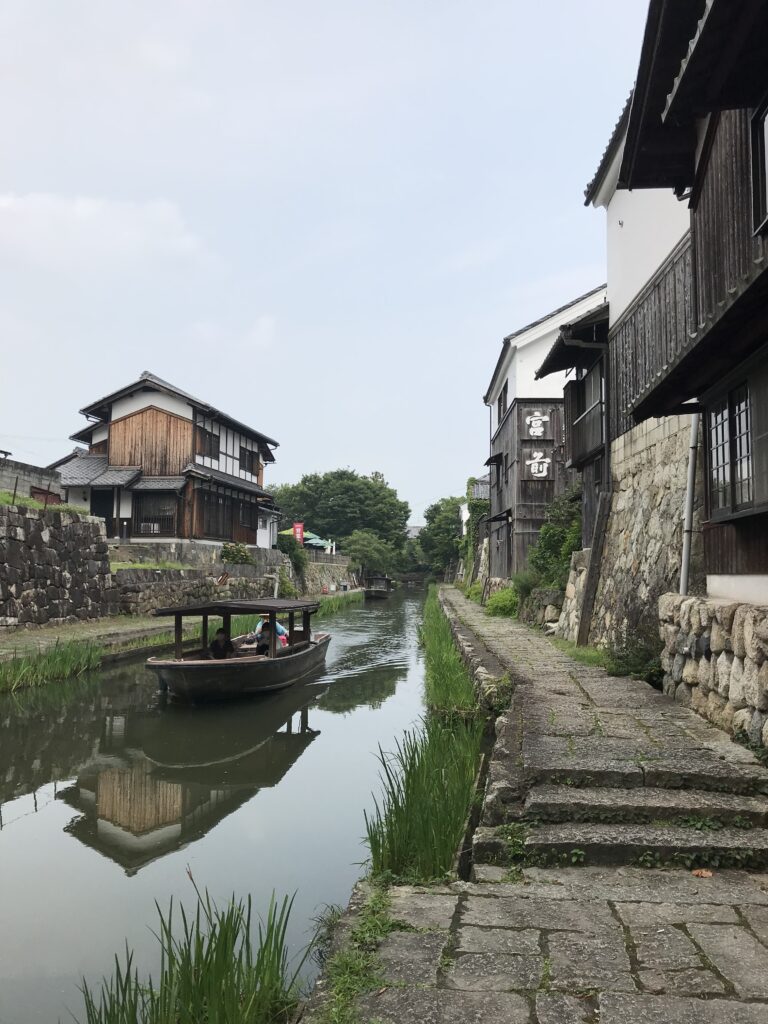
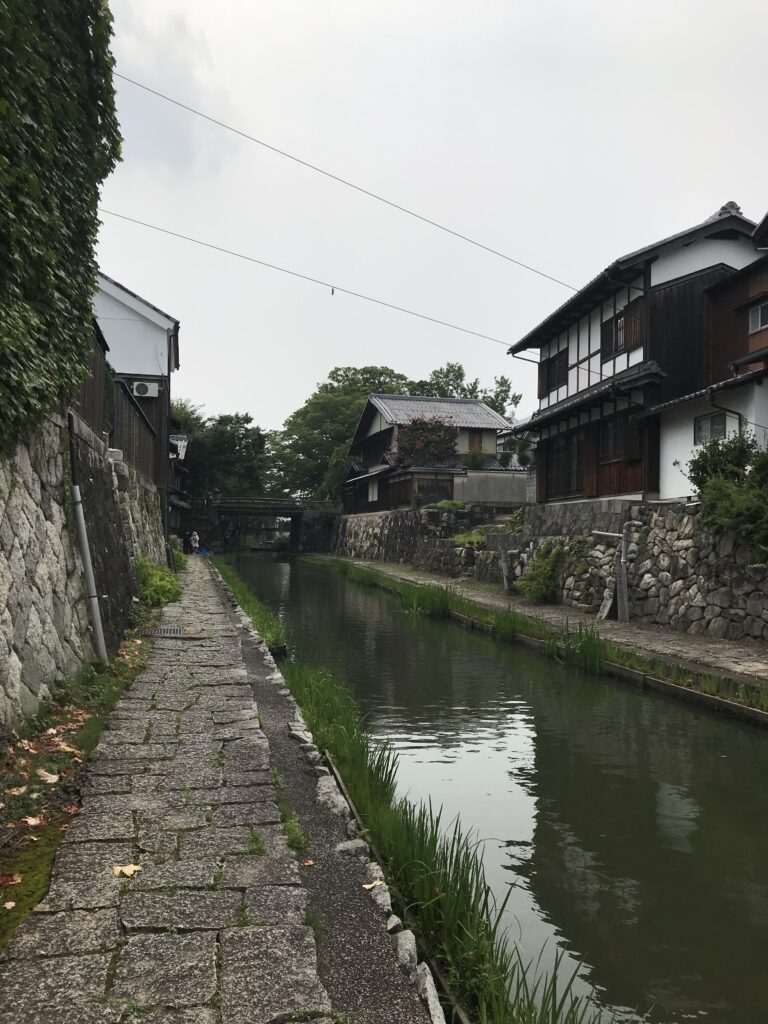
お馴染みの時代劇の舞台でした
調べてみると、数多くの時代劇の撮影に使われていました。大阪や京都から、無茶苦茶遠いわけではないので、ロケには便利な場所なのかもしれません。水戸黄門、遠山の金さん、必殺仕事人、などなど、小学校、中学校時代にテレビで観ていた番組だけでなく、最近では佐藤健の「るろうに剣心」も撮影されたそうです。
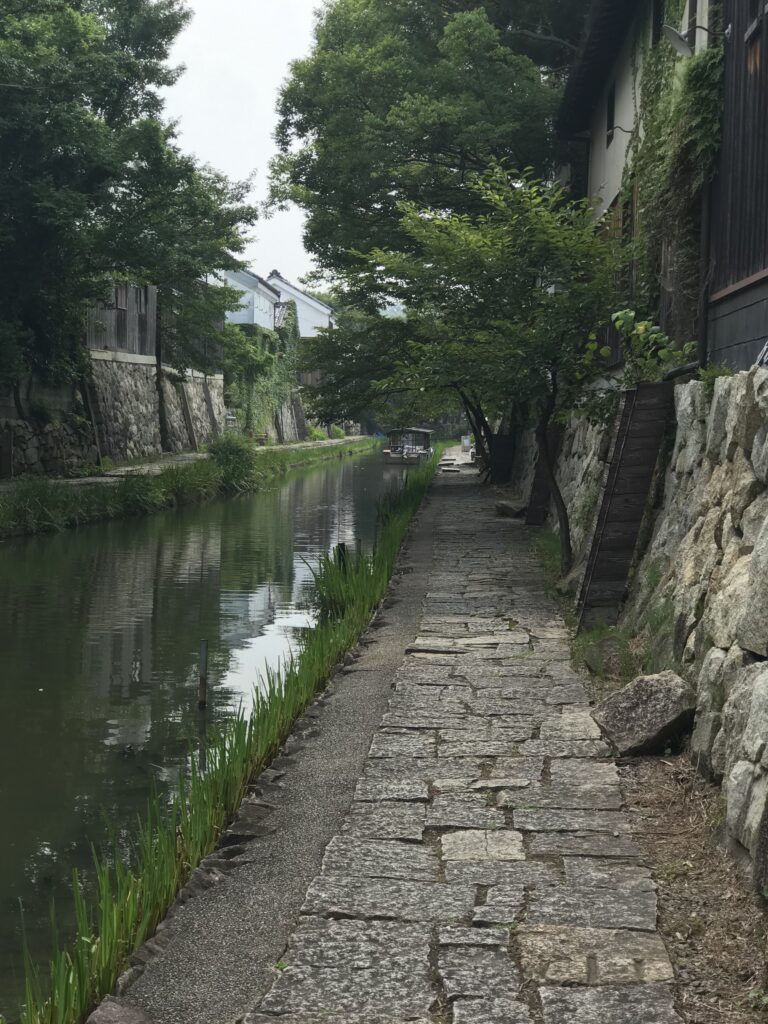
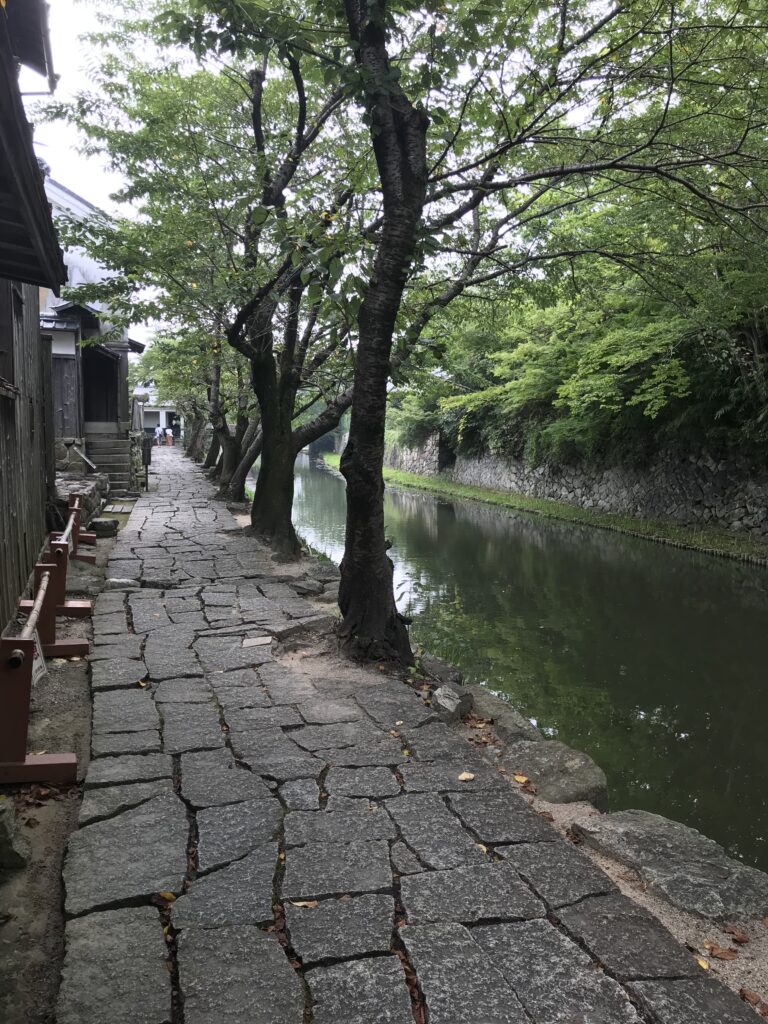
家に帰った後、妻に「あさが来た」の録画を見せてもらいました。この辺かなと思う場所もありましたが、おそらく撮影後、石垣の上の建物に何らかの画像処理をかけていると思われるので、まったく同じ風景というわけではありませんでした。訪日客を連れてくるにはちょっと京都から離れていますが、風情のあるいい場所でした。(完)
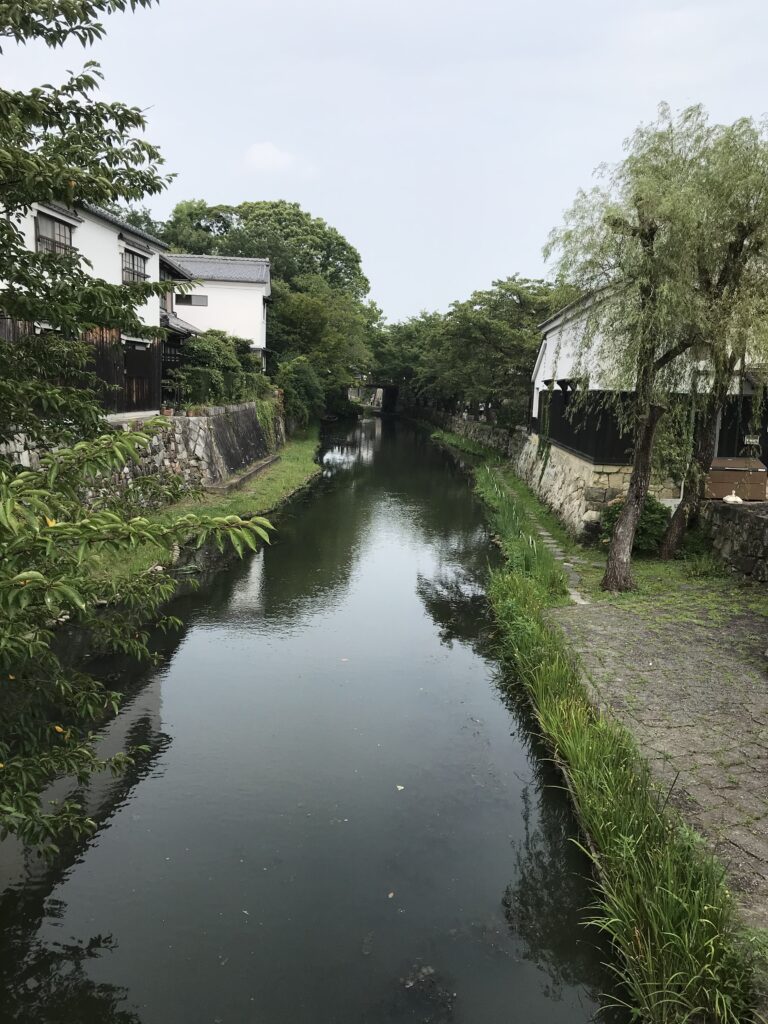
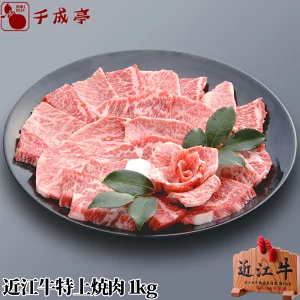
「近江牛 特上焼肉 1kg」 ギフト プレゼント 御祝 内祝 お返し
価格:10,800円
(2022/8/10 13:52時点)
感想(22件)
Hachimanbori @ Omihachiman City
Have you ever heard of Hachimanbori, a waterway in Omihachiman City, Shiga Prefecture? Even if you do not, many of you must have unknowingly seen it as a location for TV and movies. It is said that it was originally built by Toyotomi Hidetsugu, who ruled this area during the Warring States period, to connect it to Lake Biwa for water transportation.
From the bridge, the moat looks just like any other moat, but when you go down from the bridge and stand at the same level as the moat, you feel as if you have time-traveled back to the Edo period or the early Meiji period. Both sides of the moat are paved with cobblestones, from which stone walls are cut away, and old whitewashed houses stand side by side.
Some years ago, my wife was watching the NHK morning television series “Asa ga Kita” starring Ms. Haru in the lead role. In the movie, there was a scene that used this Hachimanbori moat. Since then, I had received several requests to visit the site, and finally was able to come.
When I looked into it, I found that it had been used for the filming of numerous period dramas. It is not absurdly far from Osaka and Kyoto, so it is probably a convenient location for filming. Not only the shows I watched on TV during my elementary and junior high school days, such as “Mito Komon,” “Kinsan of Toyama,” and “‘Hissatsu Shikigotonin,” but also the recent “Rurouni Kenshin” by Takeru Sato was filmed there.
After returning home, I asked my wife to show me the recording of “Asa ga kita”. There were some places that I thought might be around here, but it was not exactly the same scenery, as they probably did some image processing on the buildings on the stone walls after filming. It is a bit far from Kyoto to bring visitors, but it was a nice and elegant place. (End)

フランス人が日本人によく聞く100の質問全面改訂版 フランス語で日本について話すための本 [ 中井珠子 ]
価格:2,640円
(2022/1/3 17:33時点)
感想(0件)
Hachimanbori @ Omihachiman City
Avez-vous déjà entendu parler de Hachimanbori, un cours d’eau situé dans la ville d’Omihachiman, dans la préfecture de Shiga ? Même si ce n’est pas le cas, beaucoup d’entre vous ont dû le voir, sans le savoir, comme un lieu de tournage pour la télévision et les films. On dit qu’il a été construit à l’origine par Toyotomi Hidetsugu, qui régnait sur cette région pendant la période des États combattants, pour la relier au lac Biwa afin de permettre le transport par voie d’eau.
Depuis le pont, le fossé ressemble à n’importe quel autre fossé, mais lorsque vous descendez du pont et que vous vous tenez au même niveau que le fossé, vous avez l’impression d’avoir voyagé dans le temps jusqu’à la période Edo ou le début de la période Meiji. Les deux côtés des douves sont pavés, les murs de pierre sont découpés et de vieilles maisons blanchies à la chaux se dressent côte à côte.
Il y a quelques années, ma femme regardait la série télévisée matinale de la NHK “Asa ga Kita” avec Mme Haru dans le rôle principal. Dans le film, il y avait une scène qui utilisait ce fossé de Hachimanbori. Depuis lors, j’ai reçu plusieurs demandes pour visiter le site, et j’ai finalement pu venir.
En me renseignant, j’ai découvert qu’il avait été utilisé pour le tournage de nombreux drames d’époque. Il n’est pas absurdement loin d’Osaka et de Kyoto, c’est donc probablement un endroit pratique pour le tournage. Non seulement les séries que je regardais à la télévision pendant mes années d’école primaire et de collège, comme “Mito Komon”, “Kinsan of Toyama” et “Hissatsu Shikigotonin”, mais aussi le récent “Rurouni Kenshin” de Takeru Sato ont été tournés ici.
De retour à la maison, j’ai demandé à ma femme de me montrer l’enregistrement de “Asa ga kita”. Il y avait quelques endroits que je pensais être dans les environs, mais ce n’était pas exactement le même paysage, car ils ont probablement fait un traitement d’image sur les bâtiments sur les murs de pierre après le tournage. C’est un peu loin de Kyoto pour amener des visiteurs, mais c’était un endroit agréable et élégant. (Fin)
